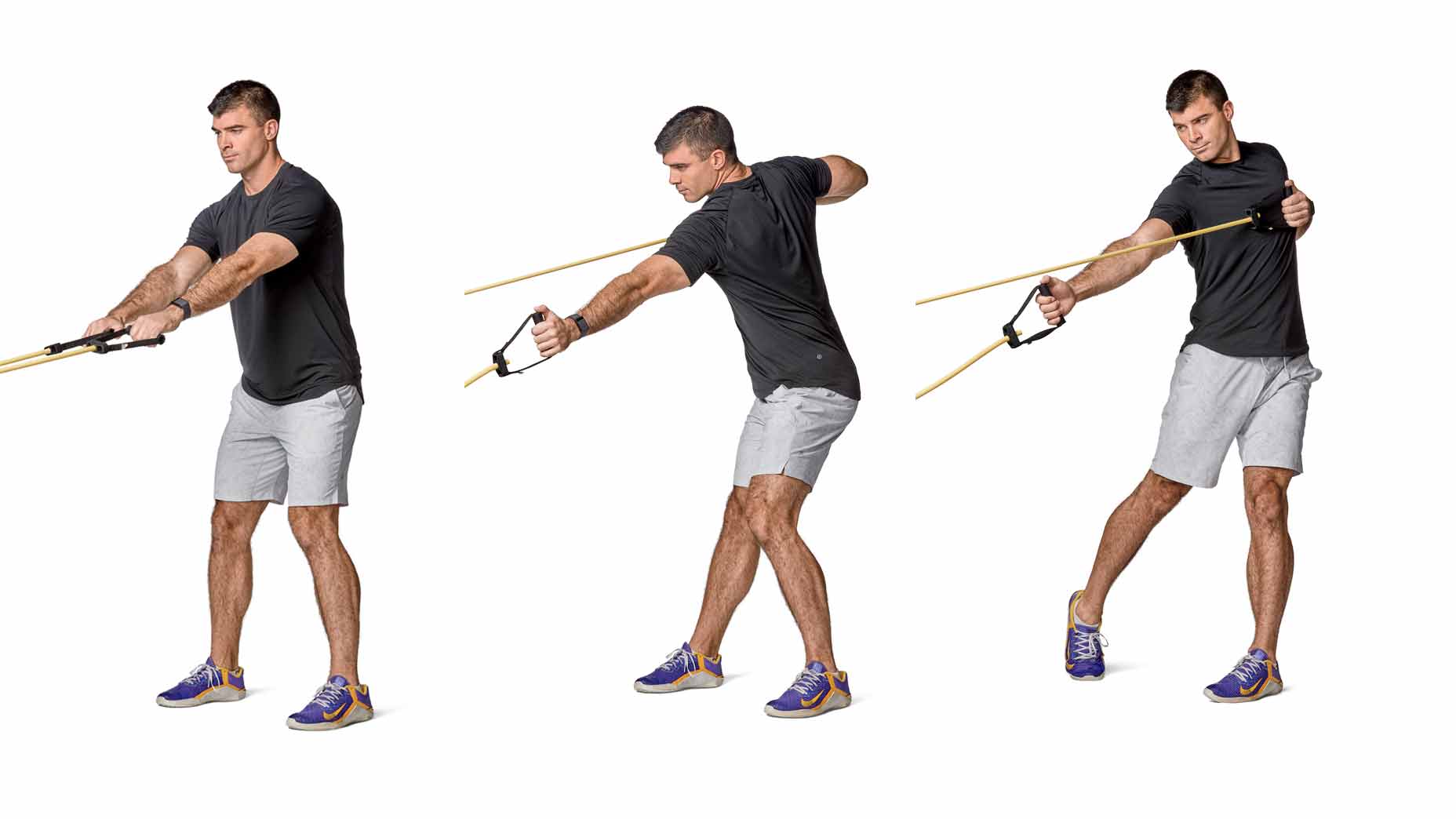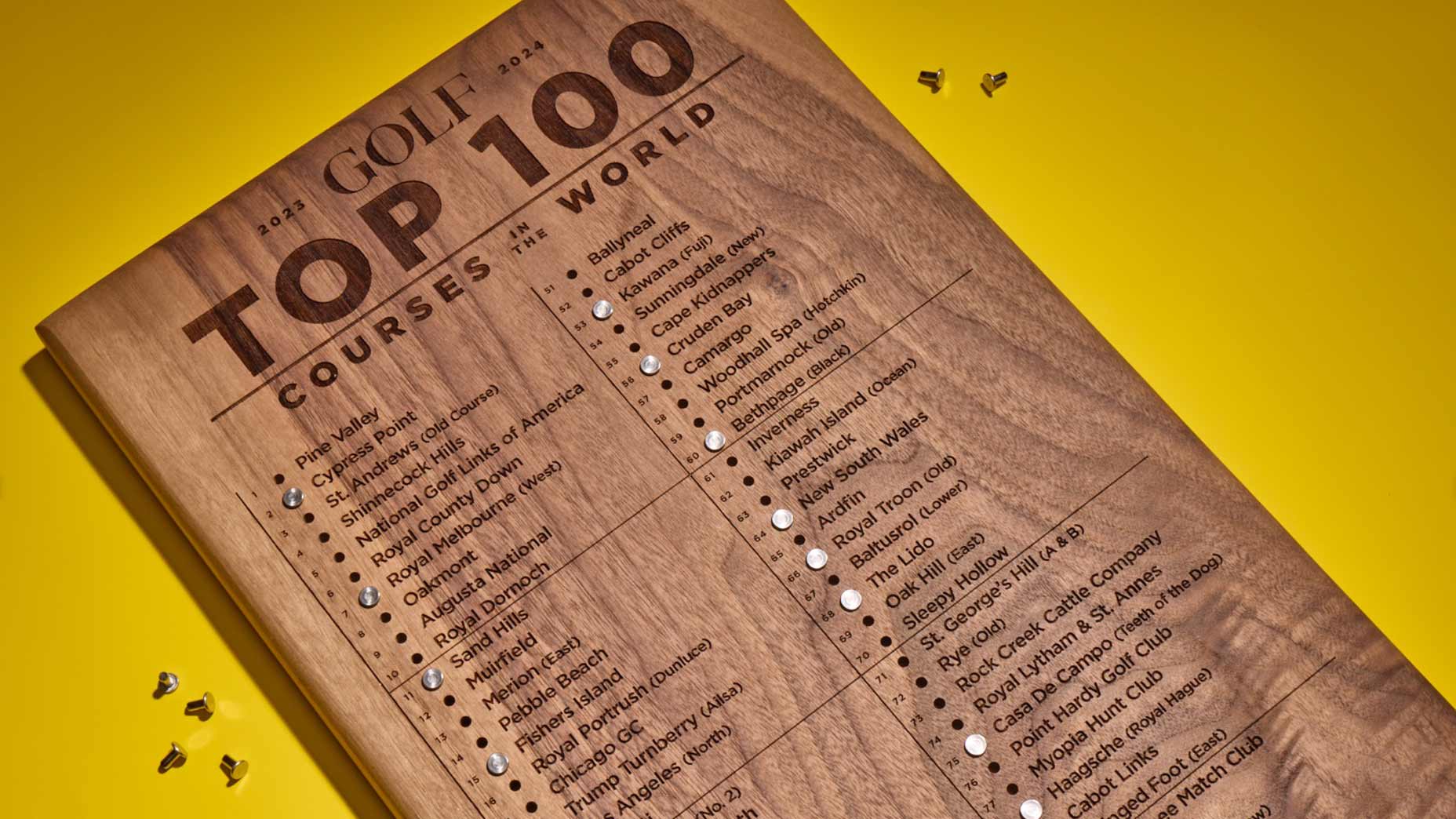6 effective exercises to get your golf game in shape in 2023

These exercises will get you in shape this season.
Chris McEniry
Ah, the holiday season: a time for toasting, gorging and getting out of golf shape. That goblet, knife and fork — never mind the hours hunkered down in your desk chair while shopping online — can do a real number on your body, and, with it, your swing. Use it or lose it, as we say in the business.
To stay injury-free and reach those lofty 2023 on-course goals, you’ll need a fitness plan to regain and improve your strength, flexibility and explosiveness. Lucky for you, we’ve put that plan together using the preferred exercises of the stable of Tour pros we work with at the Joey D Golf Sports Training Center in Jupiter, Fla. Now all you need to do is get after it like they do!
Here are six exercises to get yourself in shape this season.
1. Goblet squats

Why: When it comes to power, everything begins from the ground up — and, sorry, but power walking won’t add the power you need. A strong base is mandatory for a yardage-gobbling golf swing, and this exercise adds serious leg strength. Thanks to the band, it also activates the gluteus medius to stabilize the knee and sacroiliac joint, which links your pelvis and lower spine.
How: Put an exercise band just above your knees. Next, set your feet shoulder-width apart and pointed straight ahead — a nice athletic posture. Take a kettlebell in both hands and hold it at the middle of your chest. Sink down to 90 degrees, as if you’re sitting in a chair, then rise back to the initial position.
How many: Start with 6 to 8 reps, building up to 10 to 12, three to four times a week.
Favored by: Lucas Glover
2. Hip circles with slider

Why: Excessive desk time and lack of consistent exercise can tighten up the hip muscles. This exercise increases hip mobility, which lessens the chance for injury and makes it easier to load into your right side on the backswing and unload into your left side on the downswing and follow-through.
How: Start in a push-up position, with your hands under your shoulders. In one smooth motion, bring a leg up toward your chest, out to the side and then around, back to the original position. (Tip: A drinks coaster works well as a slider, allowing your foot to glide along the ground.) Remember to keep your core engaged throughout the exercise.
How many: Start with 8 to 10 on each side, building up to 12 to 15, three to four times a week.
Favored by: Jessica Korda
3. Backswing trail leg loading with band

Why: Sometimes, exercises in the form of a golf swing are just what your swing and body need to wake up those golf muscles if you haven’t swung a club in a few weeks. This one teaches your body (or just reminds it) how to load correctly in the backswing. It keeps you in your posture when you activate the upper half with the band, and it increases thoracic and lumbar stability in addition to external rotation.
How: Place an exercise band under your left foot (for right-handed golfers) and get into your golf setup position. Pull the band back to the top of your “swing,” keeping that lead arm straight, and return to the starting position. Then pull back up again, with little to no break in between, so you’re getting some cardiovascular work as well.
How many: Start with 6 to 8 reps, building up to 10 to 12, three to four times a week. (A symmetrical body is a healthier body, which is why we often do exercises in each direction, but that’s not necessary with this golf-specific move.)
Favored by: Harold Varner III
4. Load and explode from trail leg to lead leg

Why: This exercise works all your pulling muscles — the entire posterior chain, glutes, hamstrings, lats, rhomboids. It’s another great “feel and real” exercise, simulating what you should feel in your golf swing in terms of loading onto your right side and exploding into your left side.
How: Stand parallel to the wall, holding exercise bands in your golf posture. Pull the right hip back as you pull the right band back while holding your left arm out in front of you, mimicking the backswing. Once you complete that pull, explode and mimic your downswing, dynamically transferring energy from the right side to the left side. Remember: Load… and explode!
How many: Start with 5 to 6 reps, working your way up to 10, three to four times a week.
Favored by: Justin Thomas
5. Split stance band rotations

Why: Think about seated dumbbell curls or leg presses — they’re slow. People don’t understand that if you want to swing faster, you have to move faster. And that means not just training the body but the brain too. The central nervous system needs to get used to fast, and if you haven’t trained fast, you won’t be able to swing the club fast effectively. Also, the staggered stance challenges your stability, which works on decelerating quickly too. If you can’t decelerate quickly, you lose balance at your finish.
How: Secure an exercise band around something stable. Put your elbows near your sides. Drop your right foot back, so that both knees are now flexed in an athletic position, and do a super-quick series of 90-degree rotations across your midline to the left while keeping your core engaged. Then reverse the exercise by dropping the left foot back and rotating to the right.
How many: Start with 8 to 10 reps, working your way up to 10 to 12, three to four times a week.
Favored by: Max Homa
6. Reverse slide lunge with T spine rotation

Why: Injuries occur when there’s dysfunction in the kinetic chain, and this move addresses the kinetic chain from the ground up. It activates the glutes and increases thoracic stability via a more stable lumbar spine. It also teaches you, neuromuscularly, how to load the trail leg, adding speed and power, and creates the X factor: separation between the upper and lower body, which adds even more velocity and pop.
How: With feet narrowly apart and arms extended to the sides, create tension on an exercise band. Slide your right foot back with a coaster, then turn your chest to the left — the “T spine rotation” — while maintaining the band’s tension. Reverse with the left foot back and chest to the right.
How many: Start with 6 to 8 reps, then work up to 10 to 12, three to four times a week.
Favored by: Lexi Thompson











